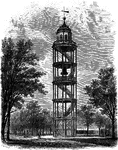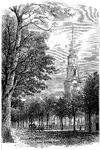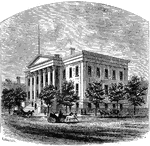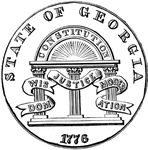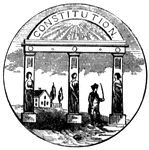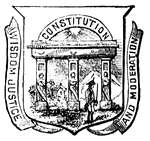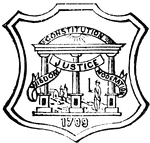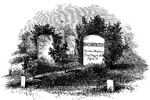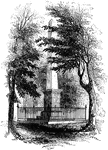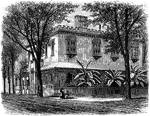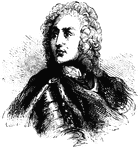The Georgia ClipArt gallery includes 89 illustrations related to the State of Peach State.

13 Star United States Flag, 1776
Color illustration of a 13 Star United States flag. The original 13 stars represent the states of Delaware,…

13 Star United States Flag, 1776
Black line illustration of a 13 Star United States flag. The original 13 stars represent the states…

Allatoona Pass
The Battle of Allatoona, also known as Allatoona Pass, was fought October 5, 1864, as part of the Franklin-Nashville…
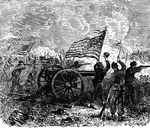
Battle of Atlanta
Showing the Battle for Atlanta, which Sherman won for the Union during the Civil War.

Atlanta, Georgia in 1874
An illustration of Atlanta, Georgia as depicted in 1874. Atlanta, GA is the capital and the most populous…
Siege of Atlanta
"The Siege of Atlanta, Ga.- Confederate attack on General Logan's Corps, July 28th, 1864. The assailants…

Burlesque Dress Parade
"Soldiers participating in a burlesque dress parade. Thanksgiving festivities at Fort Pulaski, Ga.,…
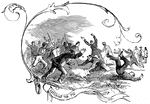
Catching the Pig
"Soldiers playing 'catch the pig.' Thanksgiving festivities at Fort Pulaski, Ga., Thursday, November…
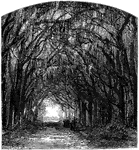
Bonaventure Cemetery
Bonaveture Cemetery is a public cemetery located on a scenic bluff of the Wilmington River, east of…

Battle of Chickamauga
The Battle of Chickamauga, fought September 18-20, 1863, marked the end of a Union offensive in south-central…

Battle of Chickamauga
"Battle of Chickamauga- repulse of the Confederates at Crawfish Creek. We present a most interesting…

Battle of Chickamauga
"Battle of Chickamauga, Ga., September 19th-20th, 1863, between Generals Rosecrans and Bragg. Our sketch…

Cliff overlooking Tugaloo River
An illustration of a cliff over looking the Tugaloo river. The Tugaloo River is a short river bordering…
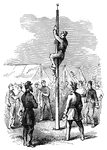
Climbing Pole
"Soldiers climbing up a greased pole. Thanksgiving festivities at Fort Pulaski, Ga., Thursday, November…

Howell Cobb
He was an American political figure. A Southern Democrat, Cobb was a five-term member of the United…
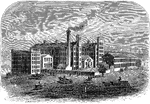
Cotton Mill
An illustration of a cotton mill in Columbus, Georgia. A cotton mill is a factory housing spinning and…
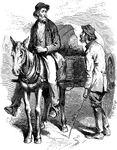
Georgia Crackers
An illustration of two Georgia Crackers, a term that refers to the original American pioneer settlers…
!["A detachment of the First South Carolina [African American] Federal Volunteers, under the command of Colonel Beard, repelling the attack of Confederate troops in the vicinity of Doboy River, GA." —Leslie, 1896](https://etc.usf.edu/clipart/11200/11251/doboy_11251_mth.gif)
Doboy River
"A detachment of the First South Carolina [African American] Federal Volunteers, under the command of…

Fort Macon
"Surrender of Fort Macon, GA., April 26th, 1862. Exterior on side facing the Federal Batteries, showing…
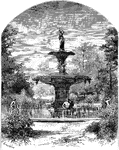
Fountain
An illustration of a large fountain located in Forsyth Park in Savannah, Georgia. Forsyth Park is a…

Ironclad Georgia
"Confederate ironclad ram Georgia lying off Fort Jackson, Savannah River, Ga., December 1862."—…

Georgia Campaign
"The campaign in Georgia- Federal troops foraging near Warsaw Sound."— Frank Leslie, 1896

Georgia State Capitol, Atlanta
The Georgia State Capitol, in Atlanta, Georgia, in the United States, is an architecturally and historically…
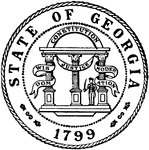
Seal of Georgia
The Seal of the State of Georgia, 1799. The seal shows an arch with three pillars symbolizing the constitution…
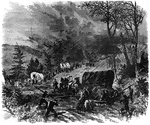
Campaign in Georgia
"The campaign in Georgia. A baggage train crossing the mountains in a storm. General Sherman, after…

War in Georgia
"The war in Georgia. Wagon train passing Resaca at night. Our correspondent wrote: 'No general probably…

Joseph Habersham
(1751-1815) He served in the Revolution as lieutenant Colonel in the Georgia Continental Lines
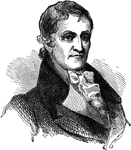
Joseph Habersham
Joseph Habersham (July 28, 1751 - November 17, 1815) was an American businessman, Georgia politician,…
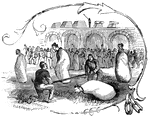
Hurdle Sack Race
"Federal soldiers participating in a hurdle sack race. Thanksgiving festivities at Fort Pulaski, Ga.,…

Tybee Island
"Tybee Island, Savannah River, Ga.- Views of the lighthouse and barracks- destruction of the lighthouse…
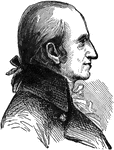
James Jackson
James "Left Eye" Jackson (September 21, 1757–March 19, 1806) was an early Georgia politician of the…

Landscape
An illustration of a man standing on a ledge of Lookout Mountain looking over a valley. Lookout Mountain,…

Macon Railroad
"Sherman's campaign in Georgia- Federal forces at Jonesborough destroying the Macon Railraod."— Frank…
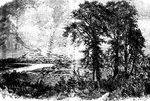
Lookout Mountain
Lookout Mountain, actually a plateau at the northwest corner of Georgia, the northeast corner of Alabama,…

Yonah Mountain
Yonah Mountain (more commonly referred to as Yonah) is located in the Chattahoochee National Forest…

The Landing of Oglethorpe in Georgia
Oglethorpe settled near the present site of Savannah, Georgia on February 12, 1733. He negotiated with…
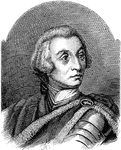
General James Oglethorpe
James Oglethorpe (1/2/22/1696 - 6/30/1785) was a British general, a philanthropist and was the founder…

